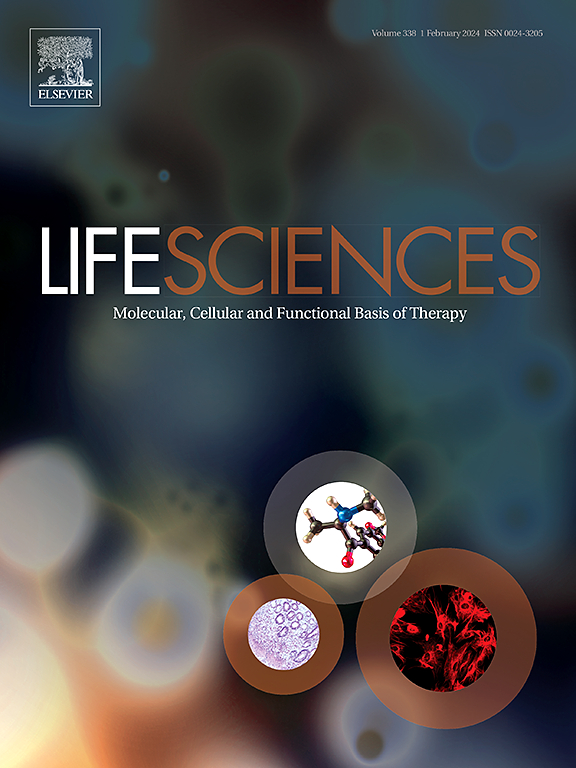Molecular pathological characteristics and mechanisms of the liver in metabolic disease-susceptible transgenic pigs
IF 5.2
2区 医学
Q1 MEDICINE, RESEARCH & EXPERIMENTAL
引用次数: 0
Abstract
Aims
This study aimed to explore the molecular pathological mechanisms of the liver in metabolic disease-susceptible transgenic pigs via multiomics analysis.
Materials and methods
The triple-transgenic (PNPLA3I148M-GIPRdn-hIAPP) pig model (TG pig) was successfully constructed in our laboratory via the CRISPR/Cas9 technique previously described. Wild-type (WT) pigs and TG pigs after 2 or 12 months of high-fat and high-sucrose diet (HFHSD) induction (WT2, TG2, WT12, and TG12 groups, respectively) were used as materials. The transcriptome, metabolome, and lipidome were used to investigate the molecular mechanisms of the liver in pigs.
Key findings
The TG2 pigs presented mild metaflammation and insulin resistance (IR) which was similar to WT12 pigs. Compared with the other three groups, the TG12 pigs presented severe hepatocyte ballooning, fat deposition, and portal area fibrosis. The transcriptome data suggested that the TG2 pigs presented upregulated gene expression in the extracellular matrix (ECM). The TG12 pigs presented more severe metaflammation and exhibited imbalanced glycolipid metabolism. Interestingly, genes such as ETNPPL, GABBR2, and BMP8B might be key regulatory targets for liver injury. The metabolome and lipidome suggested that long-chain polyunsaturated fatty acids (LCPUFAs) and phospholipids with corresponding LCPUFAs were remodelled. Importantly, bis(monoacylglycerol) phosphates (BMPs) and sulfatides (SLs) could be the key regulatory metabolites in liver injury.
Significance
ETNPPL, GABBR2, and BMP8B might be potential therapeutic targets for liver injury. BMPs and SLs might be biomarkers for the diagnosis and treatment of liver diseases.
代谢性疾病易感转基因猪肝脏的分子病理特征及机制
目的:通过多组学分析,探讨代谢性疾病易感转基因猪肝脏的分子病理机制。材料与方法:本实验室利用前述CRISPR/Cas9技术成功构建了三转基因(PNPLA3I148M-GIPRdn-hIAPP)猪模型(TG猪)。以高脂高糖饲粮(HFHSD)诱导2或12 个月后的野生型(WT)猪和TG猪(WT2、TG2、WT12和TG12组)为材料。利用转录组、代谢组和脂质组研究猪肝脏的分子机制。主要发现:TG2猪表现出与WT12猪相似的轻度炎症和胰岛素抵抗(IR)。与其他三组相比,TG12猪出现严重的肝细胞球囊化、脂肪沉积和门区纤维化。转录组数据表明,TG2猪在细胞外基质(ECM)中表达上调。TG12组猪出现更严重的超炎症,糖脂代谢失衡。有趣的是,诸如ETNPPL、GABBR2和BMP8B等基因可能是肝损伤的关键调控靶点。代谢组学和脂质组学表明,长链多不饱和脂肪酸(LCPUFAs)和具有相应LCPUFAs的磷脂被重塑。重要的是,双酰基甘油磷酸(BMPs)和硫脂(SLs)可能是肝损伤的关键调节代谢物。意义:ETNPPL、GABBR2和BMP8B可能是肝损伤的潜在治疗靶点。BMPs和SLs可能是肝脏疾病诊断和治疗的生物标志物。
本文章由计算机程序翻译,如有差异,请以英文原文为准。
求助全文
约1分钟内获得全文
求助全文
来源期刊

Life sciences
医学-药学
CiteScore
12.20
自引率
1.60%
发文量
841
审稿时长
6 months
期刊介绍:
Life Sciences is an international journal publishing articles that emphasize the molecular, cellular, and functional basis of therapy. The journal emphasizes the understanding of mechanism that is relevant to all aspects of human disease and translation to patients. All articles are rigorously reviewed.
The Journal favors publication of full-length papers where modern scientific technologies are used to explain molecular, cellular and physiological mechanisms. Articles that merely report observations are rarely accepted. Recommendations from the Declaration of Helsinki or NIH guidelines for care and use of laboratory animals must be adhered to. Articles should be written at a level accessible to readers who are non-specialists in the topic of the article themselves, but who are interested in the research. The Journal welcomes reviews on topics of wide interest to investigators in the life sciences. We particularly encourage submission of brief, focused reviews containing high-quality artwork and require the use of mechanistic summary diagrams.
 求助内容:
求助内容: 应助结果提醒方式:
应助结果提醒方式:


